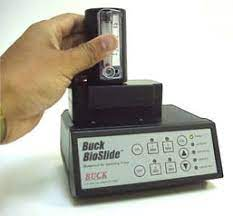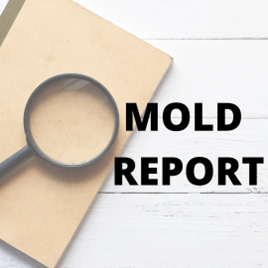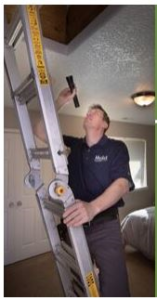How to Test for Mold in Your House or Building in 5 Steps – Certified Inspections
When somebody suspects that they may have a mold problem in their home or building, they call in a mold specialist, which is a mold assessor or mold inspector. But very few people actually know just how the mold specialist tests for mold. There is no magic gadget for this, but rather there are various tools that are used when interfaced with years of training and experience by the mold assessor. The following will give the reader a general idea of this process.

The first step if for the mold assessor to interview the client and determine what prompted their concern enough to contact the assessor in the first place. There are many common reasons such as:
Somebody has been feeling sick
Discoloration on the surface of a wall, ceiling, floor, attic, clothing or other household content has been observed.
A moldy odor has been detected.
There has been a water event such as flooding, seepage, a roof leak, a broken pipe, a spill, etc.
A family is moving into a new house and just wants to be sure there is no mold problem so their family will be safe.
Someone is selling a house and the home inspector for the buyer suspects that there is mold and the buyer will not commit to the house until they know if a mold problem exists.
The Mold Inspection and Risk Assessment
Once information has been gathered from the client, the mold assessor performs a thorough visual inspection of the premises. This is done with aid of a powerful flashlight and if necessary, a ladder. But the most important tools are the assessor’s eyes and brain which is predicated upon his many years of training and experiential knowledge. In addition, the assessor will use his sense of smell to identify potential sources of mold. After completing the visual inspection, the assessor will write down a list of the samples he will need to collect the requisite data to determine whether a serious mold problem exists. He will list the type and location of each sample to share with the client.

The assessor will go over his recommendations regarding the samples needed with the client and explain his reasoning for each one. After this dialectical processes, and the number and types of samples are agreed upon, the client will sign a short but formal contract that spells out the number of samples and base fee for labor that they consent to.

The two main pieces of equipment used for testing mold are the vacuum pump and the swab or tape lift. The vacuum pump is a small plastic box into which a microscope slide is inserted. There is a small slot above the slide compartment. This is used to sample they types and quantity of mold spores that exist in the air. The assessor pushes a button on the pump and it collects 75 liters of air in 5 minutes. The slide is then safely stored in a plastic slide holder case which is shipped to a lab. When there is a mold-like visible substance observed, the assessor wipes the substance with a sterile swab that has been treated in saline solution. The swab is then inserted into a protective case and also shipped to a lab. The assessor sends a chain of custody form with the samples to the lab. This paper identifies each sample and its location, as well as when it was taken and who handled it. The chain of custody and samples are overnighted to a lab which analyzes them and produces a spreadsheet with the data for the assessor to analyze.

Once the samples have been analyzed, the assessor will produce a report for the client and email it to them. In it, he will tell whether anything dangerous was found and if so, what it was, where it was found, what caused it, how to remediate it, and how to keep it from returning. If remediation is required, the remediation contractor will have to follow the protocol in the assessor’s report, and when they finish the work, the assessor will return to the job site and re-test to make sure the work was successfully completed and the area is now safe.

